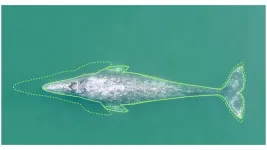In November 2023, the FDA issued a warning about a risk of secondary cancers — particularly blood cancers — that may be associated with CAR-T cell therapy. The warning was preceded by a rising tide of concern following reports of patients diagnosed with T cell cancers unrelated to the cancer for which they had been treated.
However, the study of over 700 patients treated at Stanford Health Care indicated that the risk is low — around 6.5% in the three years after therapy. In the only case of fatal secondary T-cell cancer, researchers found it was likely due to the immunosuppression caused by CAR-T cell therapy, rather than the CAR-T cells. The compromised immune system allowed pre-existing, but not previously detected, cancer cells to grow explosively in the patient.
“We wanted to understand this one rare case, so we analyzed all the patients treated with CAR-T cell therapy at Stanford with wide breadth and studied this single case extraordinary depth,” said professor of medicine Ash Alizadeh, MD, PhD. “We compared protein levels, RNA sequences and DNA from single cells across multiple tissues and time points to determine that the therapy didn’t introduce the lymphoma into this patient; instead it was already brewing in their body at very low levels.”
The study’s conclusions may alleviate some concerns sparked by the FDA’s “black box”warning — a prominent box on medication labels that warns of risky side effects. More importantly, however, it may help researchers and clinicians identify prospective CAR-T cell therapy recipients who are at increased risk of secondary cancers. Although these patients are unlikely to forgo potentially lifesaving treatment to avoid a small risk of future cancer, they could be monitored more closely after receiving the therapy or screened thoroughly for other cancers before initiating CAR-T cell treatment.
Alizadeh, who is the Moghadam Family Professor and the leader of the Cancer Genomics Program at the Stanford Cancer Institute, and David Miklos, MD, PhD, professor of medicine and chief of bone marrow transplantation and cellular therapy, are the senior authors of the study, which will be published on June 13 in The New England Journal of Medicine. Postdoctoral scholars Mark Hamilton, MD, PhD; Takeshi Sugio, MD, PhD; and Troy Noordenbos, MD, PhD are the lead authors of the research.
The problem with cancer treatments
The idea of a cancer treatment causing other cancers is not new. The chemotherapy and radiation treatments that are standard for many types of cancers can cause genetic mutations in previously healthy cells that cause them to ignore the biological guardrails meant to keep cell division in check.
In CAR-T cell therapy, immune cells called T cells are isolated from a patient and genetically engineered to more efficiently seek out and kill cancer cells. To do so, researchers introduce a custom-made gene into the T cells’ DNA. This gene encodes instructions for a protein called a chimeric antigen receptor that recognizes and binds to cancer cells; when the protein is made by the T cells and affixed to their surfaces, they become efficient cancer-killing machines.
When researchers were designing the therapy, they used genetic engineering strategies to ensure that the inserted gene would generally not disrupt normal cellular functions. But if the gene for the new protein is mis-inserted in the genome it could inactivate or modify genes involved in key cellular pathways such as those that control cell growth. If this happens, the T cells that are meant to be curative may instead become cancerous.
After the FDA announced in November it was investigating the risk of secondary cancers, Miklos and his colleagues realized Stanford Medicine’s large biobank of tissue and blood samples from people receiving CAR-T cell therapy could hold vital answers, both about the relative risk and whether these cancers arose from the manipulated T cells. They partnered with researchers in Alizadeh’s laboratory to conduct an in-depth look at the DNA sequences, the RNA messages (which give a glimpse into the proteins a cell is making) and the proteins in the samples.
The researchers analyzed the outcomes for 724 people treated with CAR-T cell therapy at Stanford Health Care between 2016 and 2024. Among those people, the incidence of secondary blood cancers approached 6.5% over a median of three years of follow-up, which is roughly similar to patients who underwent stem cell transplantation rather than CAR-T cell therapy to treat their cancers. Only one person rapidly developed and died from a T cell cancer called a T cell lymphoma shortly after CAR-T cell therapy.
The researchers used molecular, cellular and genetic analyses — including several novel genetic profiling techniques developed in Alizadeh’s laboratory — to compare all 724 patients’ tumors, their CAR-T cells and their healthy cells at multiple time points before and after CAR-T cell treatment.
“This was a tour de force effort from the study’s first authors, working feverishly as a team from just before Thanksgiving through Christmas,” Alizadeh said.
The analysis found no evidence that the T cells responsible for the patient’s second cancer were the T cells engineered for the CAR-T cell therapy — they were molecularly and genetically distinct. However, both sets of T cells were infected with a virus known to play a role in cancer development. Furthermore, the patient had a history of autoimmune disease in the years prior to their first cancer diagnosis.
The study’s findings suggest that secondary cancers arising after CAR-T cell therapy may be due to baseline immunosuppression or the side effects of the treatment, rather than the mis-insertion of the gene for the chimeric antigen receptor during the genetic engineering of the T cells.
“These results may help researchers focus on the immune suppression that can precede and often follows CAR-T cell therapy,” Miklos said. “Understanding how it contributes to cancer risk is particularly important as the CAR-T cell field pivots from treating high-risk, refractory blood cancers to lower risk, but clinically important, disorders including autoimmune diseases.”
“This study could serve as a blueprint for how to capture and characterize the outcomes of CAR-T therapies so we can develop a very clear understanding of their risks and benefits,” Alizadeh said. “These are lifesaving therapies that come with a very low risk of secondary cancers. The challenge lies in how to predict which patients are at higher risk, and why.”
The study was funded by the National Institutes of Health (grants R01CA233975, NCI P01 CA049605), the Leukemia and Lymphoma Society, the Lymph&Co Foundation, the Virginia and D.K. Ludwig Fund for Cancer Research, Kite-Gilead, and Adaptive Biotechnologies.
# # #
About Stanford Medicine
Stanford Medicine is an integrated academic health system comprising the Stanford School of Medicine and adult and pediatric health care delivery systems. Together, they harness the full potential of biomedicine through collaborative research, education and clinical care for patients. For more information, please visit med.stanford.edu.
END





